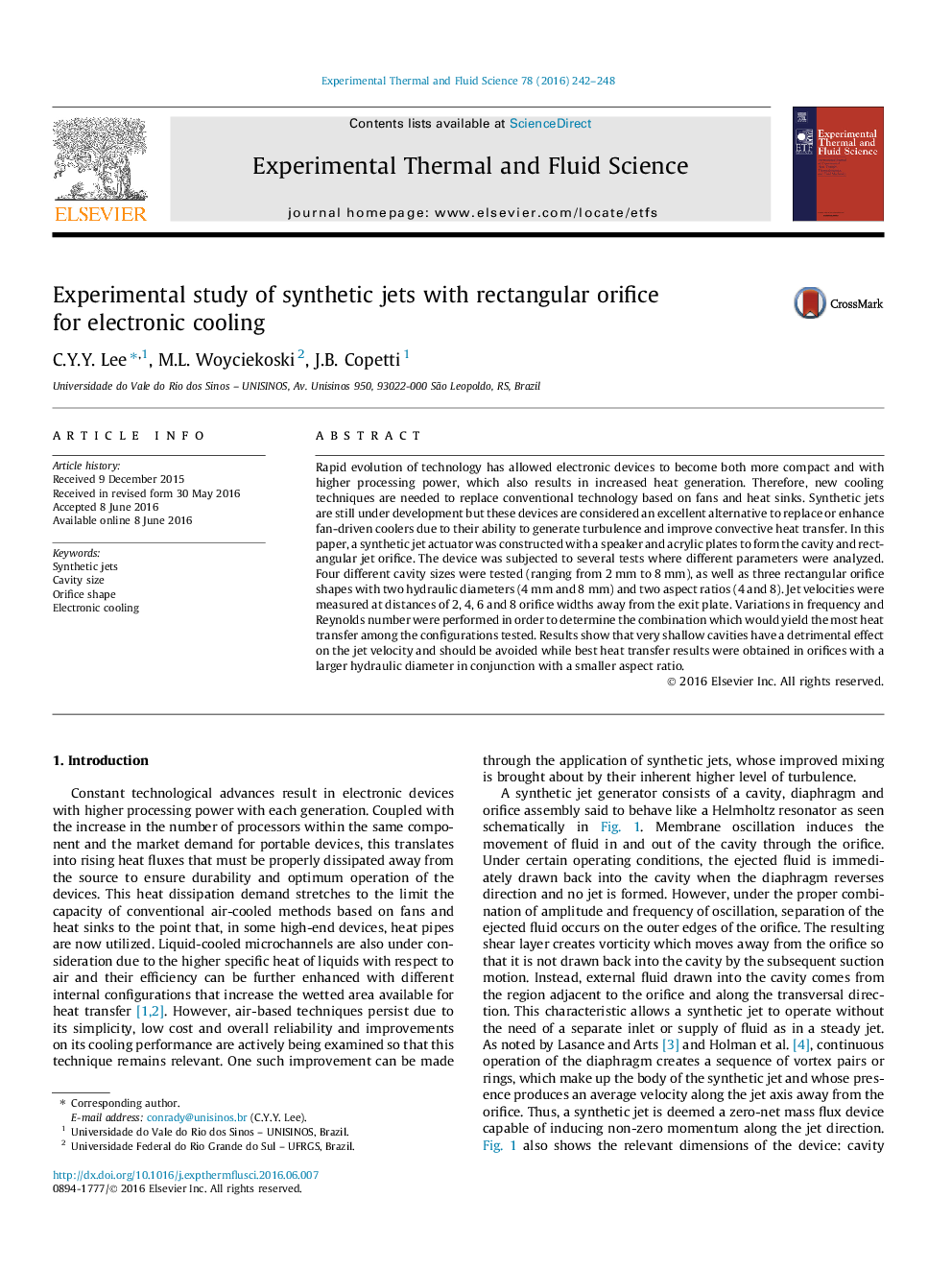| کد مقاله | کد نشریه | سال انتشار | مقاله انگلیسی | نسخه تمام متن |
|---|---|---|---|---|
| 651011 | 1457398 | 2016 | 7 صفحه PDF | دانلود رایگان |
• An synthetic jet generator has been constructed and validated against other studies.
• Higher jet velocities obtained for cavities of depth equivalent to 1 hydraulic diameter or larger.
• Peak heat transfer results for impacting jet obtained at a distance of 6 hydraulic diameters.
• Impacting jet with orifice geometry with lower aspect ratio resulted in better heat transfer.
Rapid evolution of technology has allowed electronic devices to become both more compact and with higher processing power, which also results in increased heat generation. Therefore, new cooling techniques are needed to replace conventional technology based on fans and heat sinks. Synthetic jets are still under development but these devices are considered an excellent alternative to replace or enhance fan-driven coolers due to their ability to generate turbulence and improve convective heat transfer. In this paper, a synthetic jet actuator was constructed with a speaker and acrylic plates to form the cavity and rectangular jet orifice. The device was subjected to several tests where different parameters were analyzed. Four different cavity sizes were tested (ranging from 2 mm to 8 mm), as well as three rectangular orifice shapes with two hydraulic diameters (4 mm and 8 mm) and two aspect ratios (4 and 8). Jet velocities were measured at distances of 2, 4, 6 and 8 orifice widths away from the exit plate. Variations in frequency and Reynolds number were performed in order to determine the combination which would yield the most heat transfer among the configurations tested. Results show that very shallow cavities have a detrimental effect on the jet velocity and should be avoided while best heat transfer results were obtained in orifices with a larger hydraulic diameter in conjunction with a smaller aspect ratio.
Figure optionsDownload as PowerPoint slide
Journal: Experimental Thermal and Fluid Science - Volume 78, November 2016, Pages 242–248
